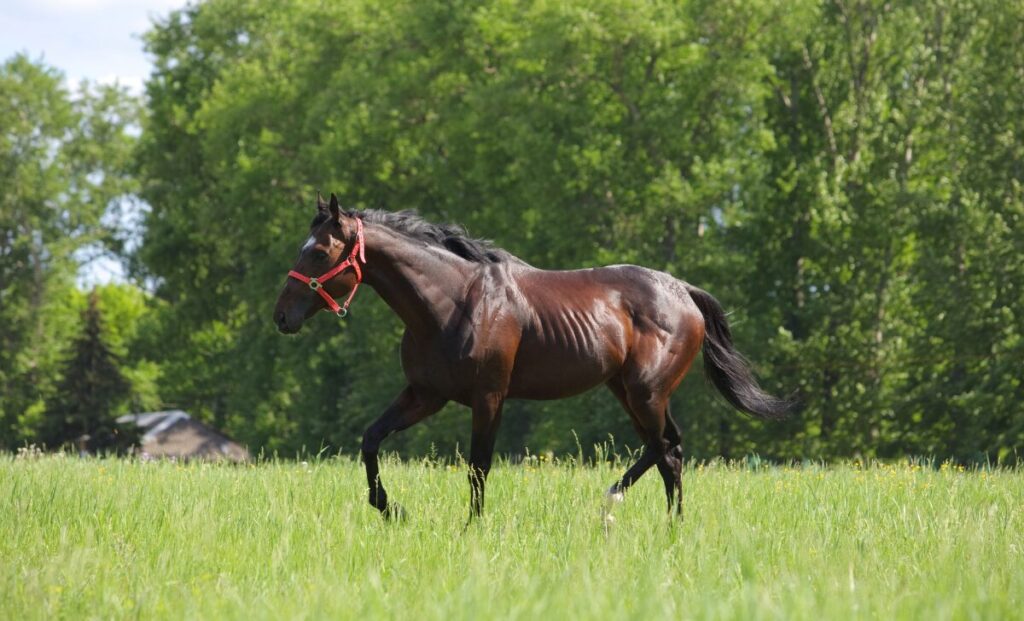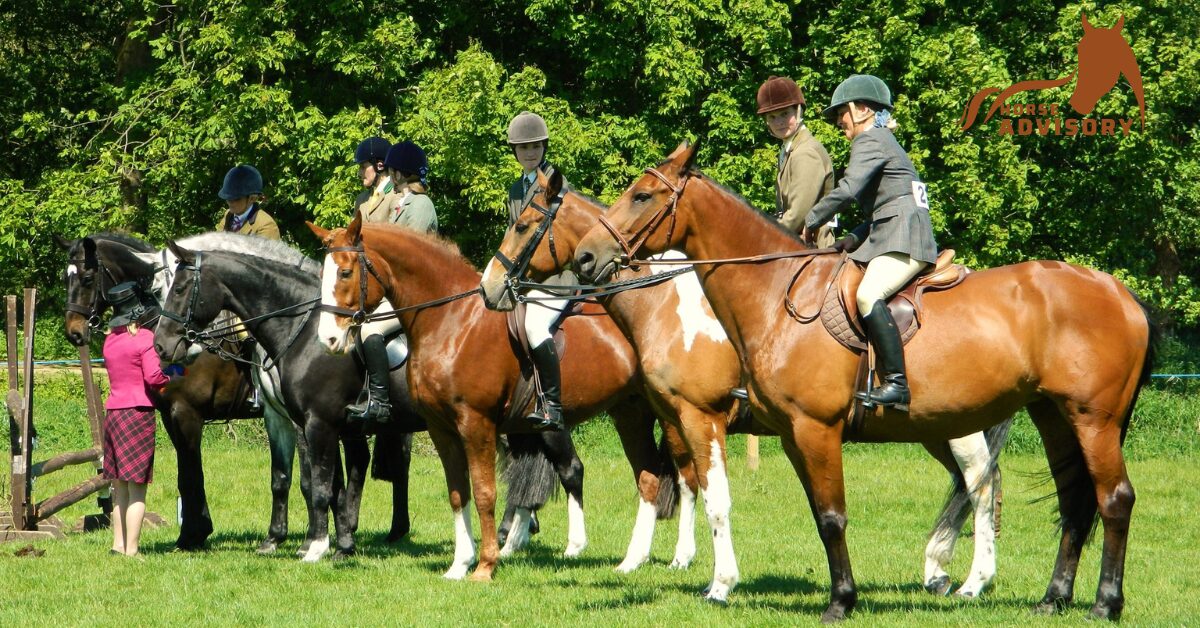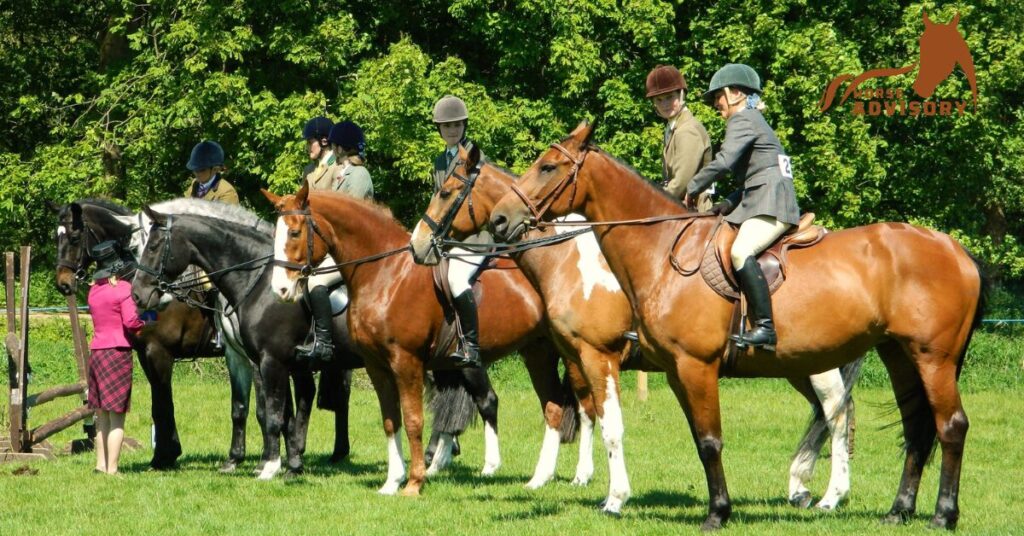Thoroughbred horses have long been synonymous with dominance in the world of racing. Their unparalleled supremacy is a result of multifaceted factors that encompass historical significance, athletic prowess, breeding superiority, specialized training, economic and cultural impact, technological advancements, ethical considerations, and global influence.
Historical Significance and Legacy
The rich history of Thoroughbreds in racing is steeped in a legacy that extends back through centuries of influential bloodlines and pivotal moments in the sport’s evolution. This storied legacy has woven an indelible tapestry of racing traditions and culture, shaping the equestrian world into the vibrant and dynamic landscape that we recognize today.
Dating back to the 17th century, the emergence of Thoroughbreds as a distinct breed marked a transformative era in the history of horse racing. This pivotal development laid the groundwork for the establishment of organized racing events and the cultivation of a breed renowned for its speed, endurance, and competitive spirit.
During the 18th and 19th centuries, the selective breeding practices and meticulous lineage documentation further solidified the prominence of Thoroughbreds in the racing world. Notable sires and dams, such as Eclipse and Pocahontas, contributed to the formation of influential bloodlines that continue to resonate through modern-day pedigrees.
The evolution of racing traditions, from the refinement of racecourse infrastructure to the establishment of prestigious racing events, reflects the enduring legacy of Thoroughbreds. Iconic races like the Epsom Derby, the Kentucky Derby, and the Prix de l’Arc de Triomphe have become synonymous with the prowess and legacy of Thoroughbred racing, capturing the imagination of enthusiasts worldwide.
Furthermore, the cultural impact of Thoroughbred racing transcends the racetrack, permeating art, literature, and popular culture. From timeless literary works inspired by legendary racehorses to the artistic portrayal of racing scenes, the influence of Thoroughbreds has contributed to the cultural tapestry of the equestrian world.
In contemporary times, the legacy of Thoroughbreds continues to shape the narrative of racing, fostering a deep appreciation for the heritage, traditions, and enduring spirit of these magnificent equine athletes. This legacy stands as a testament to the enduring impact of Thoroughbreds on the equestrian world, showcasing their profound contribution to the rich tapestry of racing history.
Athletic Prowess and Performance
Thoroughbreds stand as paragons of athletic prowess, celebrated for their exceptional capabilities that encompass not only speed, endurance, and agility but also a harmonious blend of strength, grace, and tenacity. Their remarkable athletic traits serve as a testament to the culmination of centuries of genetic refinement and selective breeding practices, each contributing to the honing of their unparalleled racing performance.
The innate speed of Thoroughbreds is a defining characteristic that sets them apart as the swiftest breed in the realm of horse racing. Their ability to achieve breathtaking velocities on the racetrack is underpinned by a combination of long, powerful strides, exceptional cardiovascular capacity, and a natural inclination towards rapid acceleration. These attributes collectively translate to a competitive edge that has solidified the Thoroughbred’s reputation as the epitome of speed and agility in the equestrian world.
Moreover, the enduring endurance displayed by Thoroughbreds further underscores their athletic prowess. Their capacity to sustain high speeds over extended distances, often covering one to two miles in racing events, exemplifies a remarkable blend of cardiovascular efficiency, muscular strength, and mental fortitude. This enduring stamina positions Thoroughbreds as formidable contenders, capable of surmounting arduous racecourses and emerging victorious through sheer resilience and determination.
Additionally, the agility and nimbleness exhibited by Thoroughbreds on the racetrack reflect their innate athleticism and adaptability. Their ability to navigate sharp turns, negotiate obstacles, and maintain poise in high-pressure race scenarios underscores a dynamic blend of physical dexterity and mental acuity. This agility not only contributes to their competitive advantage but also amplifies the spectacle of their performances, captivating audiences with displays of precision and finesse.
The exceptional athletic capabilities of Thoroughbreds are a testament to the meticulous cultivation of desirable traits through selective breeding practices and the preservation of superior bloodlines. Each generation of Thoroughbreds represents an evolution of athletic excellence, perpetuating a legacy of unrivaled performance on the racetrack.

Breeding and Bloodline Superiority
Selective breeding practices and the preservation of superior bloodlines have indeed been instrumental in shaping the dominance of Thoroughbreds in racing. Renowned sires and dams, through the meticulous curation of genetic lineages, have left a lasting imprint on the racing scene, perpetuating a legacy of excellence and competitive prowess.
The influence of selective breeding practices on the Thoroughbred horse has been the subject of extensive research. Studies have delved into the effects of selective breeding on genetic contributions, founder-specific inbreeding depression, and the inferred origins and spread of Thoroughbred racehorses. The culmination of these findings underscores the profound impact of genetic selection and lineage preservation on the evolution of the Thoroughbred breed, affirming the significance of superior bloodlines in shaping racing performance.
Furthermore, the concept of selective breeding for speed, endurance, and other desirable traits has been a driving force behind the continual improvement of the Thoroughbred breed. This deliberate cultivation of specific genetic traits has contributed to the development of Thoroughbreds renowned for their exceptional athletic capabilities, thereby reinforcing the pivotal role of selective breeding in elevating racing standards.
It’s also essential to acknowledge the ethical considerations surrounding selective breeding, particularly as it pertains to inbreeding and its potential positives and negatives within the Thoroughbred lineage. The preservation of pure bloodlines, while aiming to enhance specific qualities, necessitates a careful balance to mitigate potential health implications associated with inbreeding.
The racing industry’s emphasis on certain stallions as ideal breeding stock and the historical significance of studying pedigrees as a method to improve bloodlines further underscore the enduring impact of selective breeding on the Thoroughbred racing landscape.
Specialized Training and Conditioning
Absolutely, the preparation of Thoroughbreds for peak performance is a multifaceted endeavor that involves rigorous training regimens and specialized conditioning programs. These initiatives are meticulously tailored to optimize the racing potential of Thoroughbreds, with the collaborative efforts of trainers, jockeys, and equine professionals converging to ensure that each Thoroughbred is primed for success on the racetrack.
Rigorous training regimens form the cornerstone of preparing Thoroughbreds for the demands of competitive racing. Trainers adeptly design and oversee training programs that encompass a spectrum of exercises, including gallops, interval training, and simulated race scenarios, all geared towards enhancing the speed, endurance, and agility of the equine athletes. These regimens are often personalized to accommodate the unique needs and capabilities of individual Thoroughbreds, thereby optimizing their physical conditioning and performance potential.
Specialized conditioning programs further complement the training process, focusing on nurturing specific athletic attributes essential for success in racing. Equine professionals collaborate closely with veterinary experts and exercise physiologists to devise comprehensive conditioning routines that address muscular development, cardiovascular fitness, and mental acuity. This holistic approach to conditioning aims to fortify the overall athleticism of Thoroughbreds, fostering a robust foundation for sustained competitive excellence.
Moreover, the pivotal role of jockeys in the training and conditioning process cannot be overstated. Jockeys provide invaluable insights into the nuances of each Thoroughbred’s behavior, temperament, and response to training stimuli, thereby contributing to the refinement of tailored training and conditioning strategies. Their intimate partnership with these magnificent athletes enables them to fine-tune training programs and adjust conditioning protocols to maximize the racing potential of the Thoroughbreds under their care.
The symbiotic collaboration among trainers, jockeys, and equine professionals signifies a unified dedication to the holistic development of Thoroughbreds, encompassing not only physical conditioning but also psychological preparedness and nutritional optimization. This collective commitment underscores the unwavering pursuit of excellence and the perpetual quest to elevate the standards of racing performance within the Thoroughbred community.
Economic and Cultural Impact
The economic impact of Thoroughbred racing extends far beyond the racetrack, encompassing a diverse range of sectors such as the breeding industry, wagering, event attendance, and media interest. The holistic influence of Thoroughbred racing resonates deeply within both the economic and cultural domains, manifesting in multifaceted contributions to various industries and societal facets.
The economic significance of Thoroughbred racing and breeding is underscored by its substantial employment generation, export income, and direct contribution to national and state economies. Studies have indicated that the horse industry in the United States alone contributes billions of dollars to the economy and supports a substantial number of full-time jobs. Additionally, the economic impact spans across various economic activities, including spending on training, breeding, jockey fees, facilities, broadcasting services, and wagering, thus stimulating widespread economic activity and bolstering associated industries.
Moreover, Thoroughbred racing exerts a profound cultural influence that extends beyond its economic ramifications. Its pervasive presence permeates art, literature, and popular culture, thereby enriching the cultural tapestry and captivating audiences worldwide. The enduring legacy of Thoroughbred racing is intricately woven into the fabric of society, serving as a muse for creatives and a source of inspiration for cultural narratives.
The amalgamation of economic vitality and cultural resonance positions Thoroughbred racing as a multifaceted phenomenon that transcends conventional boundaries, leaving an indelible mark on both global economies and the collective consciousness of society.
Technological Advancements and Innovation
Technological advancements and innovation have significantly transformed the landscape of Thoroughbred racing, ushering in a new era characterized by enhanced training methodologies, advanced healthcare solutions, and sophisticated performance analysis tools. The infusion of cutting-edge technologies continues to redefine the competitive edge of Thoroughbreds in the racing arena, empowering trainers, veterinarians, and industry professionals to optimize the athletic potential and well-being of these magnificent equine athletes.
The integration of data-driven technologies has profoundly influenced the training regimens of Thoroughbred racehorses. Trainers now harness the power of data analytics to tailor individualized training programs, leveraging insights from wearable sensors, GPS tracking, and motion analysis systems to monitor performance metrics, gait dynamics, and biomechanical parameters. This data-centric approach enables trainers to fine-tune training protocols, mitigate injury risks, and maximize the physical conditioning of Thoroughbreds, thereby elevating their preparedness for competitive racing events.
Furthermore, technological innovations have revolutionized the healthcare practices employed in the management of Thoroughbred racehorses. State-of-the-art diagnostic imaging modalities, such as advanced MRI and CT scanning, enable precise assessments of musculoskeletal health and early detection of potential injuries, facilitating proactive interventions and personalized rehabilitation strategies. Additionally, wearable health monitoring devices equipped with biometric sensors provide real-time health status updates, enabling veterinarians to proactively address any emerging health concerns and ensure the overall well-being of Thoroughbreds under their care.
In the realm of performance analysis, advancements in video analytics, machine learning algorithms, and biometric tracking systems have empowered industry professionals to gain deeper insights into the racing performance of Thoroughbreds. These technologies facilitate comprehensive assessments of race strategies, biomechanical efficiency, and physiological responses, offering invaluable feedback for refining training approaches and enhancing racing tactics.
The adoption of high-tech innovations and data-driven methodologies underscores the ongoing commitment of the Thoroughbred racing industry to uphold the welfare, performance, and competitive prowess of these exceptional athletes.
Ethical Considerations and Welfare Efforts
Ethical considerations in Thoroughbred racing have sparked discussions and initiatives aimed at ensuring the welfare and ethical treatment of these equine athletes. The industry has increasingly focused on addressing ethical concerns through a multifaceted approach that encompasses welfare initiatives, retirement programs, and responsible breeding practices. These endeavors underscore a commitment to prioritizing the well-being and post-career transitions of Thoroughbred racehorses, thereby reinforcing ethical stewardship within the racing community.
Welfare initiatives within the Thoroughbred racing industry strive to safeguard the health, safety, and overall welfare of racehorses throughout their careers. These initiatives encompass comprehensive veterinary care, injury prevention protocols, and regulatory measures designed to uphold ethical standards and mitigate risks associated with competitive racing.
Moreover, retirement programs and rehoming efforts play a pivotal role in promoting ethical post-career transitions for retired racehorses. Collaborative endeavors between industry stakeholders, rescue organizations, and adoption agencies aim to provide retired Thoroughbreds with opportunities for second careers, rehabilitation, and lifelong care beyond their racing tenure. These initiatives reflect a conscientious approach to ethical responsibility by valuing the well-being of racehorses beyond their competitive years.
Responsible breeding practices also feature prominently in the ethical landscape of Thoroughbred racing. Emphasizing genetic diversity, sound conformation, and temperament traits, responsible breeding endeavors seek to cultivate a sustainable and ethically conscious approach to the propagation of Thoroughbred bloodlines. By prioritizing the health and vitality of future generations of racehorses, these practices align with ethical imperatives that underpin the long-term welfare of the breed.
The collective pursuit of ethical considerations and welfare efforts underscores the industry’s commitment to fostering a culture of ethical stewardship, where the well-being and ethical treatment of Thoroughbred racehorses remain paramount.
Global Influence and Future Prospects
The global influence of Thoroughbred racing resonates across diverse regions and cultures, underscoring its enduring appeal and profound impact on the equestrian landscape. The widespread embrace of Thoroughbred racing signifies its integral role in the fabric of international sporting traditions, reflecting the amalgamation of athleticism, heritage, and competitive spirit on a global scale.
Speculations regarding the future prospects of Thoroughbreds in racing encompass a spectrum of considerations, ranging from broader industry trends to evolving regulatory changes and sustainability initiatives. Anticipated advancements in genetic research, equine healthcare, and performance analytics are poised to redefine the landscape of Thoroughbred racing, fostering an environment that prioritizes the well-being, integrity, and longevity of these exceptional equine athletes. Furthermore, the exploration of sustainable racing practices, eco-friendly venue management, and responsible breeding methodologies aligns with the industry’s commitment to environmental stewardship and ethical consideration, auguring a future where Thoroughbred racing evolves in harmony with contemporary societal values and ecological imperatives.
The evolving confluence of tradition, innovation, and ethical consciousness within the realm of Thoroughbred racing heralds a promising trajectory that seeks to honor the rich heritage of the sport while embracing progressive paradigms that resonate with global sensibilities.
Conclusion
The enduring dominance of Thoroughbreds in the racing scene is underpinned by a remarkable legacy, ongoing evolution, and profound impact on the equestrian world. Their storied history, athletic prowess, and cultural significance cement their position as icons of the racing world.





